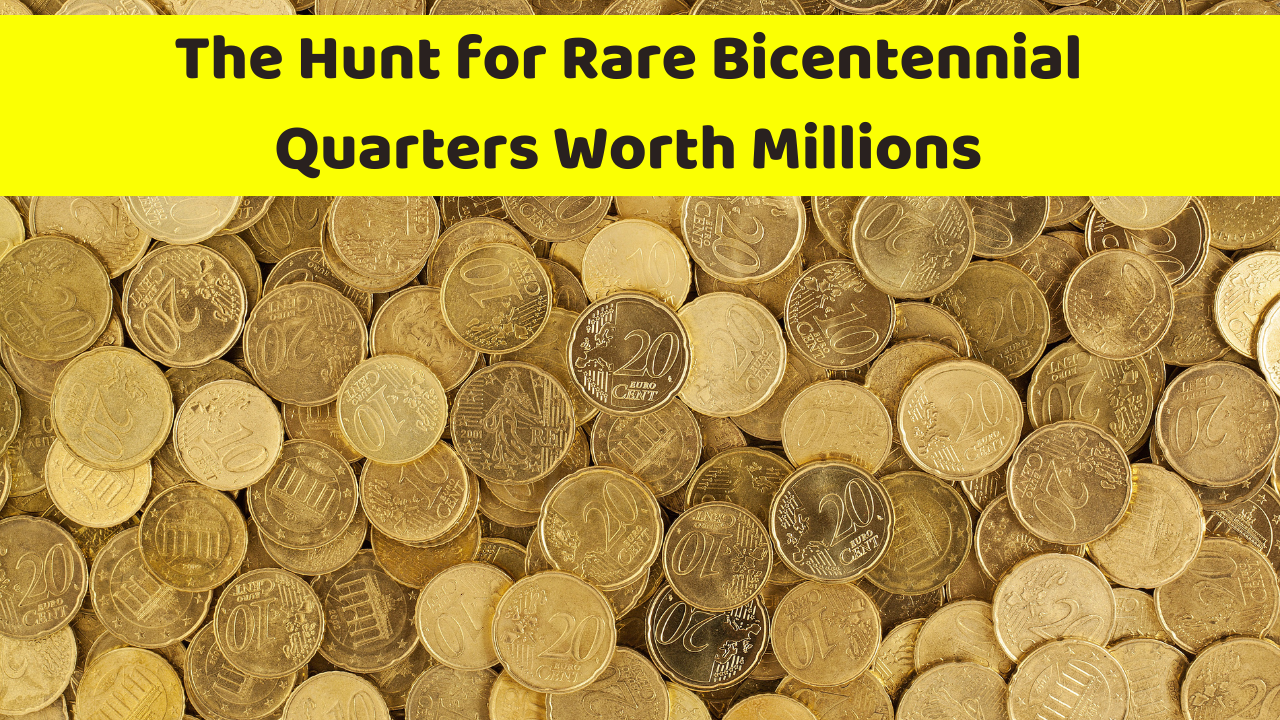The Hunt for Rare Bicentennial Quarters Worth Millions: In the dynamic world of coin collecting, the thrill of finding rare treasures can be just as exciting as their potential financial reward. Among the gems that have captivated collectors’ interest are the 1976 Bicentennial quarters, specially minted to commemorate the United States’ 200th anniversary. While these quarters are commonly found in everyday circulation, a few rare versions hold values far beyond their original face worth. Imagine uncovering a single coin that could add thousands to your wallet! Here, we explore the rarity, value, and allure of the 1976-D Double Die Obverse quarter—a coin with the potential for incredible financial gain.
The Bicentennial Quarter: A Historic Memento
Released in 1976 to celebrate America’s bicentennial, Bicentennial quarters are distinct for their unique design. Instead of the traditional bald eagle, these quarters display Independence Hall on the reverse, symbolizing the nation’s founding spirit. Although millions were minted, certain rare versions are worth much more than their face value, offering an exciting opportunity for collectors and casual finders alike.
The 1976-D Double Die Obverse Quarter: A Collector’s Dream
Of all the Bicentennial quarters, the 1976-D Double Die Obverse quarter stands out as a remarkable and highly coveted piece. This specific quarter is known for a striking minting error that caused doubling on the obverse side, notably in the word “Liberty.” This error, which resulted from a misalignment during the minting process, adds an element of uniqueness that collectors prize. In pristine condition, these quarters can fetch tens of thousands of dollars at auction, making them valuable collectibles.
Given the scarcity and appeal of this error, finding one could bring a hefty return on what appears to be simple pocket change.
What Makes the 1976-D Double Die Obverse Quarter So Valuable?
The rarity of this error is what drives its value. Double die errors, where a portion of the design appears doubled, are uncommon and highly sought after. For the 1976-D Double Die Obverse quarter, the error appears as a shadow-like doubling on the word “Liberty” and sometimes other details on the obverse. This unique trait sets it apart from standard quarters and transforms it into a collector’s prize, capable of selling for tens of thousands of dollars depending on its condition.
Why You Should Check Your Spare Change
The most exciting aspect of this valuable coin is its accessibility—it could very well be hiding in plain sight! With many rare finds being tucked away in everyday coin jars, wallets, or drawers, it’s worth taking a few moments to check your change. Some collectors have come across valuable quarters in unexpected places, adding to the thrill and potential reward of the hunt.
Tips for Identifying Rare Bicentennial Quarters
Identifying a rare Bicentennial quarter isn’t difficult but does require a careful eye. Here’s what to look for:
- Inspect for Mint Marks: Locate the “D” mint mark on the obverse, near the date, to confirm it’s a Denver-minted quarter.
- Check for Doubling: Look closely at the word “Liberty” on the obverse. Doubling in the text or numbers is a telltale sign of a Double Die Obverse error.
- Condition Matters: Quarters in mint condition are worth significantly more, so check for scratches or wear that may affect value.
Where to Sell Rare Bicentennial Quarters
Once you’ve identified a rare Bicentennial quarter, the next step is finding the right market to sell it. There are several ways to ensure you get a fair price:
- Coin Dealers: Reputable coin shops can offer evaluations and may even buy the coin directly.
- Auctions: Auctions, especially those that attract collectors, can yield high returns for rare coins in excellent condition.
- Online Marketplaces: Websites like eBay or specialized coin trading platforms can help you reach collectors, though take precautions to verify buyers and ensure secure transactions.
Frequently Asked Questions About Bicentennial Quarters
What is a Bicentennial quarter?
The Bicentennial quarter was minted in 1976 to commemorate the United States’ 200th anniversary, featuring Independence Hall on the reverse instead of the bald eagle found on regular quarters.
What makes the 1976-D Double Die Obverse quarter valuable?
This quarter is prized for a minting error that results in noticeable doubling on the obverse, particularly around the word “Liberty.” This error adds significant value and appeal among collectors.
How can I identify a 1976-D Double Die Obverse quarter?
Inspect the obverse side closely, especially around the word “Liberty” and the date. Look for a doubled effect or “shadow” image, which distinguishes it as a Double Die variety.
How much can the 1976-D Double Die Obverse quarter be worth?
Depending on condition, these quarters can sell for thousands of dollars, with some pristine examples reaching upwards of $20,000.
Where should I look for rare quarters?
Check your spare change, coin jars, and wallets. Many collectors have stumbled upon valuable coins in everyday places, making it worthwhile to examine your change.
Embrace the Adventure: Search for Your Rare Bicentennial Quarter Today!
In the world of rare coin collecting, few opportunities offer as much excitement and reward as the hunt for Bicentennial quarters. Whether you’re a seasoned collector or just someone interested in discovering a hidden gem, taking the time to examine your coins could pay off in a major way. So go ahead—check your change, and you might just find the treasure that could change your financial future!

